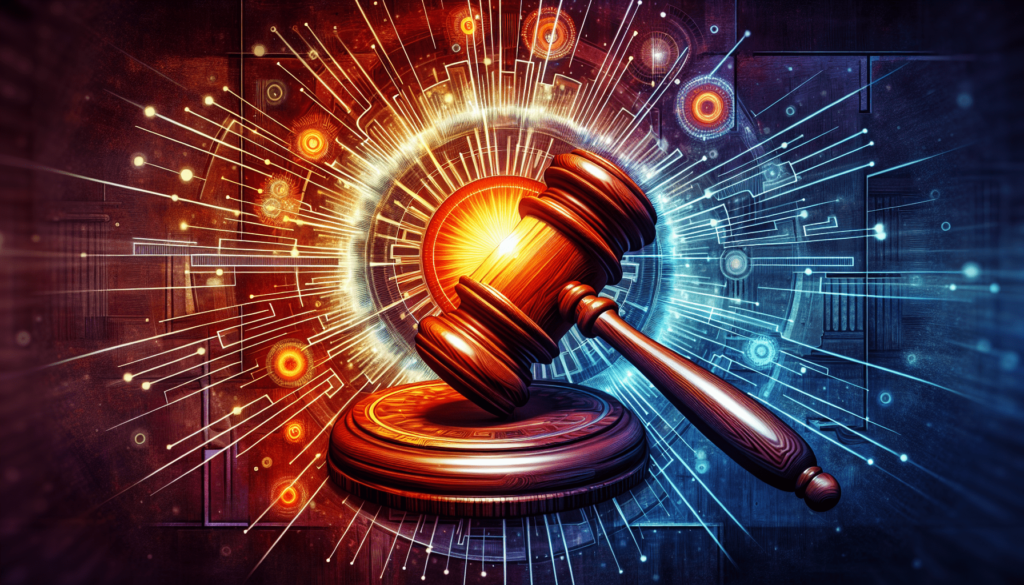In a significant legal development, a US judge has dismissed the majority of the charges brought by the Securities and Exchange Commission (SEC) against IT management software company SolarWinds and its Chief Information Security Officer, Timothy Brown, in relation to the 2020 ‘Sunburst’ cyber-attack. The court found that most of the SEC’s allegations, which claimed SolarWinds and Brown had concealed security flaws from investors, were based on speculation rather than concrete evidence. This decision marks a notable moment in the ongoing legal battles stemming from one of the most infamous cyber-attacks in recent history. Despite this partial victory, SolarWinds is still facing scrutiny over the remaining claim concerning their internal security controls. The company remains optimistic as it prepares to present its defense in the coming stages of the case. Have you ever wondered what happens when a major cyber-attack puts a well-known company’s security under a microscope?
Let’s dive into the recent developments surrounding SolarWinds and the SEC’s dismissed charges.
Sunburst: US Judge Dismisses Most SEC Charges Against SolarWinds
A significant piece of news has emerged in the tech world, generating buzz and leaving many questioning the intricacies of cybersecurity law. A US judge recently dismissed most of the SEC’s accusations against SolarWinds and its Chief Information Security Officer (CISO), Timothy Brown. These accusations followed a catastrophic cyber-attack in 2020, which sent shockwaves throughout various organizations, including essential arms of the US government.
The 2020 SolarWinds Cyber-Attack
To fully understand the importance of this ruling, we need to revisit the SolarWinds cyber-attack, also known as the Sunburst attack. This was not just another cyber-attack; it was a sophisticated and far-reaching supply chain attack. Discovered in December 2020, it impacted thousands of organizations worldwide, with its tentacles reaching into the heart of the US federal government’s departments such as Commerce, Energy, Homeland Security, State, and Treasury.
Hackers, suspected to be affiliated with the Russian government, exploited vulnerabilities in software from Microsoft, SolarWinds, and VMware. They infiltrated SolarWinds’ Orion network management software by inserting malicious code called ‘Sunburst,’ which allowed them to remotely access and potentially steal data from any infected system. Organizations using SolarWinds’ Orion platform for critical network monitoring found themselves unknowingly vulnerable once the harmful update was installed. The attackers could then leverage this access to move within the network, potentially compromising sensitive systems and data.
An Unprecedented Lawsuit Against a Cyber-Attack Victim
Fast forward to October 2023, when the SEC decided to take a bold step by accusing SolarWinds and its CISO of misconduct before, during, and after the cyber-attack. This lawsuit marked a significant departure from traditional regulatory approaches, as it was one of the first instances where a US regulator accused a company—already a victim of a cyber-attack—and took legal action against one of its executives.
SolarWinds responded to the lawsuit with a mixture of optimism and relief when the judge’s decision came through. The company’s representative expressed their anticipation for the next stage, where they hope to present their evidence and demonstrate the factual inaccuracies of the remaining claims.
Brown’s legal team remained silent, not immediately responding to media inquiries, while the SEC refrained from commenting on the dismissal of most of its charges.

The Judges’ Decision: Evaluating SEC’s Claims
The entire drama took a significant turn on July 18, 2024, when US District Judge Paul Engelmayer ruled in favor of SolarWinds and Timothy Brown, dismissing most of the SEC’s claims. In a comprehensive 107-page decision, Judge Engelmayer made it clear that the SEC’s statements—accusing SolarWinds and Brown of concealing the firm’s security weaknesses post-Sunburst attack and defrauding investors—were largely based on “hindsight and speculation.”
Examining Pre-attack Statements
One of the critical aspects the judge considered was the SEC’s claims regarding statements made by SolarWinds before the attack. The Commission contended that SolarWinds had hidden cybersecurity weaknesses in its products. The judge dismissed most of these claims, indicating that there wasn’t sufficient grounding for the accusations. Essentially, the court found that projecting future tech vulnerabilities based on past statements, without concrete evidence, did not suffice for fraud allegations.
Here’s a simplified breakdown of the judge’s decision on the SEC claims:
- Post-attack Claims: Largely deemed speculative and based on hindsight.
- Pre-attack Claims: Mostly dismissed due to insufficient evidence.
| CLAIM TYPE | JUDGE’S DECISION |
|---|---|
| Post-attack Concealment Claims | Dismissed (Speculative & Based on Hindsight) |
| Pre-attack Concealment Claims | Mostly Dismissed (Insufficient Evidence) |
| Security Control Failures | Remaining Claim considered possibly factual |
The remaining charge that Judge Engelmayer found potentially legitimate concerned the failure of security controls embedded in SolarWinds products, highlighting potential lapses in the firm’s cyber defenses.
Impact of the Sunburst Attack: A Broader Perspective
The Sunburst attack’s aftermath sparked significant debate within the cybersecurity community and policymakers alike. It was a rude awakening for organizations relying on third-party software for critical functions. The breach pushed many to rethink their security strategies, emphasizing the importance of regular software updates, rigorous third-party vendor tests, and the need for rapid incident response mechanisms.

Lessons Learned From the SolarWinds Sunburst Attack
Reflecting on the Sunburst attack, there are several vital lessons to glean, helping organizations enhance their cybersecurity landscape:
- Supply Chain Security: The Sunburst attack underscored the vulnerability of supply chains. As organizations increasingly rely on third-party vendors, it’s imperative to develop stringent vetting processes and continuous monitoring of these vendors to identify potential threats before they materialize.
- Zero Trust Architecture: One of the primary defense mechanisms against such attacks is adopting a Zero Trust model. By never trusting and always verifying each request, organizations can significantly limit attackers’ ability to move laterally once they’ve gained access.
- Regular Software Updates: Keeping software updated with the latest patches can close security gaps that attackers exploit. Regular updates ensure an organization’s defenses are in line with evolving cyber threats.
- Incident Response Plans: Having a robust incident response plan is crucial. Understanding how to act swiftly in the event of an attack can mitigate the extent of the damage and aid in quicker recovery.
The Future of Cybersecurity Regulation
The SEC’s ambitious lawsuit against SolarWinds signifies a potential paradigm shift in how regulatory bodies may handle cybersecurity breaches in the future. Typically, victims of cyber-attacks are not usually seen as targets for regulatory retribution. However, this case could set a precedent where the responsibility for cyber defenses—and the consequences of their failure—may extend to higher accountability standards.
Potential Impacts on Companies and Executives
While the majority of the SEC’s charges have been dismissed in this instance, the broader implications cannot be ignored. Companies may soon find themselves under heightened scrutiny when their security measures fall short, especially if they are publicly traded entities with shareholders to answer to.
Executives, particularly CISOs, might see an increase in personal liability, compelling them to ensure that their companies’ cybersecurity protocols are not only robust but transparently communicated to stakeholders. This trend could trigger a wave of stricter internal policies and bolster organizations’ commitment to cybersecurity investments.
SolarWinds’ Road Ahead
The road ahead for SolarWinds involves not just legal battles but also restoring its reputation and consolidating trust amongst its clients. Businesses that rely on SolarWinds’ software will be keenly monitoring how the company responds to the challenges and what measures it adopts moving forward.
Focus on Security Enhancements
SolarWinds has an opportunity to turn this crisis into a testament to their resilience by:
- Bolstering their cybersecurity framework, ensuring vigorous defenses against any future threats.
- Engaging in transparent communication with their clients about their security measures and updates.
- Continuing to collaborate with industry experts and regulators, helping shape the future of cybersecurity standards.
Conclusion: Reflecting on the Journey So Far
The case of SolarWinds and the SEC’s subsequently dismissed allegations opens a window into the intricate intersection of cybersecurity and regulatory oversight. We see a clear example of the complexities that organizations face in navigating legal landscapes while striving to secure their digital frontiers. This ruling underscores the importance of evidence-based allegations and the challenges of proving premeditated misconduct in an era dominated by rapid technological advancements and evolving cyber threats.
By taking the lessons from the Sunburst attack to heart, companies can enhance their resilience against future cyber threats, ensuring that their defenses are robust, transparent, and ever-evolving.
Whether you are a tech enthusiast, a cybersecurity professional, or just someone curious about the nuances of digital security, the ongoing developments in the SolarWinds saga undoubtedly provide much food for thought about the future of cybersecurity in a world increasingly reliant on digital interactions.
The key takeaway: cybersecurity is no longer just a backend concern—it’s a front-and-center issue that demands attention from every level of an organization, from the IT department to the boardroom. And as the cybersecurity landscape continues to evolve, so will the legal and regulatory frameworks that govern it, shaping a future where digital resilience is paramount.
Source: https://www.infosecurity-magazine.com/news/judge-dismiss-sec-charges/

